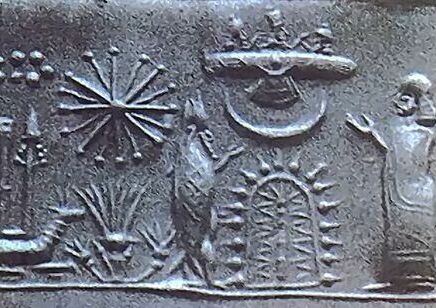Historical Notes

The Sahara
The Sahara has shown staggering fluctuations of climate since the end of the last Ice Age. The Sahara had had long eras of rivers, lakes, rich flora and fauna and a developing cattle herding human culture. From around 3500 BC the rains ceased, creating three and a half million square miles of desert. This then presented a huge obstacle to human communication and movement, cutting Africa off from developments in the Mediterranean and Middle Eastern world. North Africa remained linked to the Mediterranean world and the middle east. As were, to some extent Ethiopia and Africa’s north eastern seaboard along the Indian ocean. The Nile alone traversed the Sahara extending a long narrow ribbon of fertility and communication, deep into the heart of eastern Africa.
Population
World population in 2000 BC has been estimated at 27 Million – 1 person for every 280 people alive today. The population of sub-Saharan Africa was remarkably small, possibly only a million people(?), in nine million sq miles.
In 2000 BC Mozambique and Tanzania would have had no Negro (Bantu) population. East Africa was then inhabited by a very sparse population of hunter gatherers – ‘Khoisan’ peoples, somewhat similar to Kalahari Bushmen. (Khoisan here is a term for all “non-Bantu” indigenous races of Southern Africa). Madagascar apparently had no human population whatsoever.
Tanzania
Tanzania had a sparse human population of hunter-gatherers until cattle herders from Ethiopia / Somalia entered the area around 500 BC. The Bantu expansion reached the area c.500 AD.
Mozambique
Between the first and fifth centuries AD, Bantu-speaking peoples reached present-day Mozambique displacing the Khosian peoples. Remarkably little has been published or is known about the ancient history of Mozambique.
Madagascar
260 miles from Africa, Madagascar is the world’s fourth largest island, at a quarter of a million square miles. Wildly dissimilar, conflicting dates have been suggested for the first human settlement. In the first millennium BC, Ships must certainly have reached the island now and then, but surprisingly Madagascar had no settled population until full scale expeditions from Indonesia, that left remains of livestock, crops and iron tools (300 AD at the earliest). Bantu migration from East Africa began around 800 – 1000 AD. The introduction of slash-and-burn agriculture, cattle herding and a population surge, caused the extinction of the island’s remarkable mega-fauna c. 700 – 1000 AD.
The Bantu Expansion
From 1000 BC to 1000 AD, the ancestors of the current inhabitants of central-west Africa, Cameroon and Nigeria slowly expanded to dominate almost all of sub-Saharan Africa, culturally and genetically. They replaced or mixed with the pygmies of the central African rainforest, and the Khosian hunter-gatherer populations to the east and south. Before the expansion of the West African Bantu-speaking farmers, Central, Southern, and Southeast Africa were populated by Pygmy foragers, Khoisan-speaking hunter-gatherers, Nilo-Saharan-speaking herders, and Cushitic-speaking pastoralists (Cush was the ancient name for Ethiopia / Somalia). (Pastoralism: a form of animal husbandry, by nomadic people who move with herds).
Farming
Population densities of hunter gatherers would be much lower than pastoralist herders. Settled farmers could sustain a far higher population density than pastoralists. Possibly by a factor of ten in each case(?). Though along shore-lines or major rivers, hunter gatherers could sustain a far higher concentration of people than those in a savannah. Around 3000 BC, crop farming of millet and sorghum evolved in the Bantu heartland between present-day Nigeria and Cameroon. In farming societies with surpluses, food storage and villages, people had time to develop new tools, weapons and metal working and to support a warrior class. These people also evolved the very robust immune systems, essential in the forests of tropical Africa. Many plagues and diseases cannot gain traction in a low density populations. Human diseases such as smallpox and measles developed from diseases of domestic animals, due to high populations of animals and humans living in close proximity.
Immune Systems
Debilitating tropical diseases made the rain forests of Africa a very difficult area for humans to survive in. Reaching adulthood in good health must have been relatively unusual. Resistance to malaria, sleeping sickness, typhoid, cholera, yaws, yellow fever and parasitic worms must have been one of the main selective pressures. Farmers and pastoralists had millennia to evolve resistance. However as with the case of Europeans arriving in the Americas, hunter-gatherers population may have been devastated on suddenly encountering new migrant diseases. Native populations, prevalent there for tens of thousands of years, were swept aside.
Artefacts
Surviving evidence is remarkably scarce and there are no written records for this era. Artefacts other than stone and pottery (wood, leather, iron, bone etc) have little chance of survival in damp tropical conditions. Much of African history remains vague, complex, heavily based on genetic and linguistic evidence, contested, and evolving.
Ancient Trade Routes And Exploration
The Egyptians sent major trading expeditions to Somalia (Punt) as early as 2500 BC.
Phoenicians circumnavigated Africa c. 600BC. The Phoenician expedition sailed from the Arabian Gulf into the Indian ocean to the southern tip of Africa returning by the Pillars of Hercules to the Mediterranean two years later.
The Romans sent exploratory missions deep into the Sahara. Evidence exists that they traded as far south as the Tanzanian coast.
The Periplus of the Erythraean Sea is a Greek manuscript of c. 50 AD listing Indian Ocean trading routes, trade posts and opportunities as far south as Tanzania, Zanzibar and possibly even the Rufiji delta.